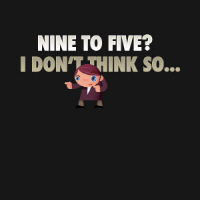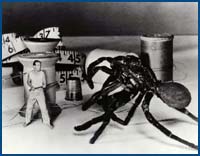My current philosophy on horizontal networking for entrepreneurs.
During a three way conversation with my friend Robin Peng, he introduced Fight Club to someone we were talking to as my 'philosophy' of networking. Surprise. I have a philosophy of social networking.

Well, I guess maybe I do.
Networking
Networking for it's own sake is usually a waste of time in a business sense. Too often I've found myself with a paper plate and a few edible tidbits, standing around in a group and evaluating the scene to see if there's someone I might be interested in talking too. In general there are lots of people that I don't think I'm interested in talking to because the evaluations I'm making are based on such scant information that I instantly assign them a category or level of interest. It's a perfectly logical way of attempting to segment those who I think I want to talk to from those I think I don't want to talk to. I have no way of knowing if I'm making a good judgement or not. I might just as easily pass up an opportunity to meet a new friend or business partner.
I'm totally aware that this is always happening to me since I'm usually dressed in tennis shoes and I may potentially have a days worth of beard growth. It's not often (read never) that I wear a suit anymore unless someone died.
So, there I am, plate in hand, attempting to decide who is worth overcoming my inherent reticence and actually introducing myself to. All the while I'm muttering under my breath that I hate these things more than the waxing scene in 40 Year Old Virgin.
Corporate Alliance has some extremely good thoughts on the subject and I'll steal one here: "You just never know who you're talking to." The person who you dropped into the 'of no interest' group might be the wife, husband, business partner, best friend or window washer of someone very important to you or your business. You just never know.
Networking is like farming, not hunting.

So, what can you do? What should you do? And... how do you do it?
Horizontal Networking
The Problem: You're not part of the networks that you want to be part of.
Everything's an old boys network, even when they're not old, or boys. Want to be part of your kids PTA, it's run by a click. Need to get in touch with Angels, they only want to talk to each other. Trying to get into Harvard Business School, it's easer if you know the dean. Want to sell me advertising space in your magazine, good luck. If you're not in, you're out. So how do you get in?
Groups consolidate into Horizontal Networks.
A horizontal network is made up of members who see themselves as equals in some way. It doesn't mean that they come from the same income bracket or social background, it means that they aggregate around a common perception that they all belong to the same group, even if that perception is fleeting.
Our kids ride horses at the same barn. We graduated from the same school. We speak French. We hate the French. We're related... Whatever . Humans have an innate sense of group that is inherently harsh. If you're in a group, you're one of us. If you're not, you're of no interest at best and we might actually want to invade your country and make you sing our national anthem.
Verticals never network... except in 'Maid in Manhattan'.
That's why groups that try to network what are perceived as two different 'classes' don't work. Just try to have an ongoing vertical networking event where VC's and Angels get together with Entrepreneurs and students. The single Angel who shows will be mobbed and that, as they say, will be the end of that. It's typical that those in the lesser stratum have much more to gain from those in the upper. For the most part, humans don't like to feel that they're offering more than their receiving and it creates 'they want something from me' tensions that people avoid.
Of Note: Humans have the ability to form around 150 total relationships and no more according to Dunbar's Number. Interesting, military organizations have always been built around these numbers. While there are some people with linked in networks of 500+, it's not really possible to have or maintain that many.
Read: Life with Alacrity's post on Dunbars Number: The group size predicted for modern humans by equation (1) would require as much as 42% of the total time budget to be devoted to social grooming.
Good to know that your aunt Millie is taking up one of your relationship slots.
Fight Club is my attempt to build a networking organization that is effective and becomes more valuable over time and, most importantly, where people will extend their networks to you. To do that It needs to have some intrinsic characteristics: It's horizontal on one axis and, it's moderated by invitation. Here are the requirements.
Interestingly, the horizontal metric we use is this: Requirement #1: You have to run a real company. No vendors. No students. No sales.
This is somewhat flexible but it's something of a screening process since any group of business decision makers is a prime target for infiltration by sales guys in disguise.
It's easy enough to get around rule #1, you just need to be invited by someone who's already a member and willing to bring you. We don't want to really be elitist after all. I've even invited a lawyer. If someone want's to attend, they just have to get a member to bring them. If they're a dud, it's the member who has to endure the taunts for pissing in the pool.
So what happens at Fight Club?
First: Time. Since Fight Club is held over a meal at a restaurant, you actually spend time with a group of people that are in this horizontal network. The time factor is of prime importance because its social interaction over time that builds trusted relationships. Fight Club events have no time limits. One went on for at least five hours.
Second: Quality. We're there for the same goal, but there is a level of trust since we ask each member to refrain from selling. This has never really been a problem since the members are all aware (mostly) of this and there's peer pressure to conform and maintain this standard. The no selling rule creates an atmosphere where you're not asking or giving business cards right out of the chute. Business is the main topic but I'm also informed about Bob Barnes search for a wife and Ryan Money's hair fiasco.
Third: Trust. If someone I know from Fight Club calls my front desk, I'll return the call. Since we now belong to the same 'network' I know that there is a social factor as well as an economic one that goes into this person's decision making. He has to maintain a level of trust with me or he runs the potential that I'll inform his nefarious deeds to the group and he'll be impacted far out of proportion to the misdeed. (Think how protective those eBay sellers are of their feedback rating.)
Four: Fun & Easy. Since the group constantly changes (we have no fees or RSVP. If you come, you come. If you don't, you don't.) So the second time you attend, you're already going to know at least a few people and there's no wall flowers. Here's Judd Bagleys review after his first dinner.
"Sweet Sassy Mollassie! That was one of the best times I've had with a bunch of dudes. Seriously, dinner lasted like four hours but could have gone on for ten, as good as the conversation was. I'm hooked on Fight Club. Thank you Jeff for organizing it. I intend to challenge Ryan Coombs for control of the Billy Barty Memorial Knock-out Hernia Belt. What an honor."
The easy part is this: Come if you want, don't if you don't. There's no fees, dues, or need to respond to anything at all. Once you're on the email list, you're notified where and when the events are taking place. That's it.
Five: Entrepreneurs should be networking with other entrepreneurs, not trying to finagle into the Angel & VC community's. Networking with other entrepreneurs provides you with access and information that benefits you far more than chasing other networks. Why? Entrepreneurs know more, provide many more options, and are much freer with their time. Other entrepreneurs can provide you with inside info about an VC's reputation as well as introductions. You benefit from a much wider net.
We'll, there it is. My philosophy on networking... for the time being.
 Thu, January 21, 2010 at 6:34 PM in
Thu, January 21, 2010 at 6:34 PM in  Business Models,
Business Models,  My Favorite Posts
My Favorite Posts  Products scale quite nicely than you.
Products scale quite nicely than you.  1 Comment | | tagged
1 Comment | | tagged  Frontdesk SEO,
Frontdesk SEO,  Medical Spa MD,
Medical Spa MD,  Medical Spa RX,
Medical Spa RX,  Shine Teeth Whitening
Shine Teeth Whitening 






